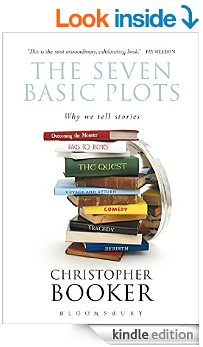 According to different sources, there are only seven (or six, five, 20, 36… or three or one) basic plots (or themes) in all of literature. Here they are:
According to different sources, there are only seven (or six, five, 20, 36… or three or one) basic plots (or themes) in all of literature. Here they are:
Seven basic plots in fiction
According to The Seven Basic Plots: Why We Tell Stories (2004) by Christopher Booker (available on Kindle) there are seven types of stories or basic plots in literature:
1) rags to riches,
2) overcoming the monster (example, Frankenstein; or, The Modern Prometheus by Mary Shelley),
3) the quest,
4) voyage and return,
5) comedy,
6) tragedy,
7) rebirth
Read the summary of The Seven Basic Plots: Why We Tell Stories
36 basic plots in fiction
In the 18th Century, Italian playwright Carlos Gozzi identified 36 plots or situations in fiction, which includes: 1) supplication (in which the supplicant must beg something from power in authority), 2) deliverance, 3) crime pursued by vengeance, 4) vengeance taken for kin upon kin, 5) pursuit, 6) disaster, 7) falling prey to cruelty/misfortune, 8) revolt, 9) daring enterprise, 10) abduction, 11) the enigma, 12) obtaining, 13) enmity of kin, 14) rivalry of kin, 15) murderous adultery, 16) madness, 17) fatal imprudence, 18) involuntary crimes of love (e.g.: discovery that one has married one’s mother, sister, etc), 19) slaying of kin unrecognised, 20) self-sacrifice for an ideal, 21) self-sacrifice for kin, 22) all sacrificed for passion, 23) necessity of sacrificing loved ones, 24) rivalry of superior vs. inferior, 25) adultery, 26) crimes of love, 27) discovery of the dishonour of a loved one, 28) obstacles to love, 29) an enemy loved, 30) ambition, 31) conflict with a god, 32) mistaken jealousy, 33) erroneous judgment, 34) remorse, 35) recovery of a lost one and 36) loss of loved ones.
